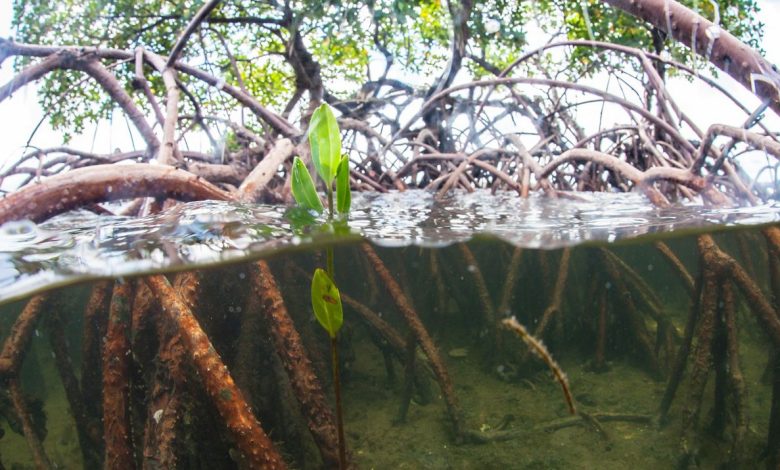New national strategy targets restoring TZ’s mangrove forests

MANGROVES, a unique group of salt-tolerant trees and shrubs thriving in tropical and subtropical coastal regions, are increasingly recognised for their immense ecological and socioeconomic importance.
According to the United Nations Educational, Scientific and Cultural Organisation (UNESCO), mangrove forests are among the most productive and biologically complex ecosystems on earth.
They provide breeding grounds for fish, protect coastlines from erosion and storm surges, purify water and serve as vital carbon sinks, storing up to four times more carbon than terrestrial forests.
Despite their importance, UNESCO reports that over 50 per cent of the world’s mangrove coverage has been lost in the past century, primarily due to coastal development, aquaculture, pollution and climate change.
The rate of mangrove destruction is now estimated to be three to five times faster than the overall rate of global deforestation.
This has prompted global conservationists and governments to act swiftly, including in Tanzania, where the government has unveiled a National Mangrove Management and Development Strategy (NMMDS) 2025–2035.
Tanzania hosts extensive mangrove forests, spanning approximately 158,100 hectares across fourteen coastal districts, with the Rufiji Delta in Kibiti District constituting 50 per cent of the resource.
ALSO READ: Minister urges collective efforts to conserve mangrove reserves
The NMMDS aligns with the National Forest Policy of 1998 and its Implementation Strategy (2021–2031), complemented by the Marine Parks and Reserves Act 1994, the National Integrated Coastal Environment Management Strategy (NICEMS) 2025 and sectoral policies on environment, energy, mining, forestry, fisheries, water and land.
Unveiling the strategy in Dar es Salaam, Minister for Natural Resources and Tourism, Dr Pindi Chana, called on the Tanzania Forest Services Agency (TFS) to collaborate with institutions, local governments and environmental stakeholders to protect and restore the country’s mangrove forests.
She emphasised that conserving mangroves is a collective responsibility, particularly for communities living near coastal zones.
“I urge TFS to work together with authorities and environmental stakeholders to protect, maintain and conserve all mangrove forests in the country so that we can continue to benefit from all the advantages provided by mangroves,” said Dr Chana.
Highlighting the socio-economic potential of mangroves, she urged TFS to initiate development projects that support livelihoods for communities near mangrove reserves.
She also recommended that councillors from districts along mangrove-rich coastlines be educated on conservation, so they can raise awareness in their communities.
Dr Chana further directed her ministry to explore ecotourism opportunities in mangrove areas as a way to attract both researchers and tourists, boosting conservation efforts and contributing to national revenue.
The Tanzania Forest Services Agency (TFS) Chief Executive Officer, Prof Dos Santos Silayo said that Tanzania is one of the leading countries in the legal protection of mangroves.
“As TFS, we are committed to enforcing laws that support mangrove conservation. As part of this celebration, we started by planting 5,000 mangrove seedlings at Kilongowima,” he said, adding that the launch also included a scientific symposium to share expert knowledge on mangrove ecosystems.
WWF Tanzania Country Director, Dr Amani Ngusaru, affirmed the organisation’s support for mangrove protection, highlighting WWF’s cooperation with the government and communities.
“This collaboration promotes a healthier environment and supports Tanzania’s commitment to preserving its rich natural heritage,” said Dr Ngusaru.
Meanwhile, Dr Redfred Ngowo, Principal Marine Conservation Warden at the Marine Parks and Reserves Unit, noted that human activity along the Indian Ocean is a major threat to mangrove sustainability.
He stressed the need for continued education of coastal communities to ensure they become stewards of the mangrove forests, not destroyers.
The NMMDS 2025–2035 aims to provide a comprehensive framework to mainstream mangrove conservation, ensure long-term ecological sustainability and enhance community engagement. It will coordinate national efforts for the sustainable management, restoration and protection of mangroves to promote ecological integrity and socio-economic development.
During the International Day for the Conservation of the Mangrove Ecosystem, celebrated annually on July 26, Kinondoni District Commissioner Saad Mtambule underscored the importance of educating communities on wetland and mangrove conservation.
Speaking in Kilongowima, he stated that every resident, especially those living near mangrove zones, must actively protect these ecosystems.
“Much of the destruction is caused by selfish individuals within the community. It should be prohibited to cut down mangroves and anyone found doing so must face legal action,” Mr Mtambule warned, adding that 15 per cent of the district’s population relies on marine-related activities that benefit from healthy mangrove forests.
He urged local government leaders to act swiftly against mangrove destruction and asked TFS to intensify patrols.
“We have every reason to safeguard and conserve these vital mangroves,” he said.
The TFS Director of Forest and Beekeeping Division, Seleboni Mushi, reinforced the value of mangroves.
“They play a critical role in shoreline protection, biodiversity support and food security and they store significant amounts of carbon,” he noted.
However, he warned that the world has lost nearly half its mangroves over the past four decades, threatening livelihoods and climate resilience.
As UNESCO and environmental experts globally continue to raise the alarm on the rapid loss of mangrove forests, Tanzania’s NMMDS 2025– 2035 emerges as a timely and strategic step toward reversing the trend.
It is a call to action not only for institutions and leaders but also for every citizen to become an advocate for these invaluable coastal guardians.





